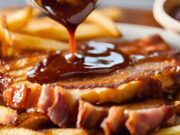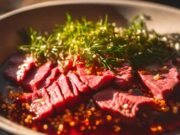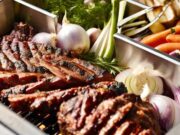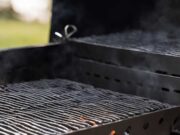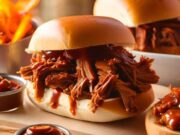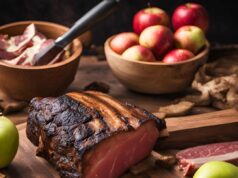Searing steaks on the grill is an art that transforms a simple cut of meat into a deliciously charred masterpiece.
You will learn everything from the science behind searing to selecting the perfect steak, as well as the essential tools needed for a flawless grilling experience.
This guide will walk you through the step-by-step process, ensuring you achieve that mouthwatering crust while keeping the interior juicy and tender.
Prepare to elevate your grilling skills and impress your guests with perfectly seared steaks.
Key Takeaways:
- Understanding the importance of searing and its impact on the flavor and texture of your steak is crucial for achieving the perfect sear.
- Proper preparation, including choosing the right cut and seasoning, is essential for successful searing on the grill.
- Using the right equipment, following step-by-step instructions, and utilizing a meat thermometer are key for achieving a perfectly seared steak. Remember to let the steak rest before enjoying for best results.
Understanding Searing: What It Means and Why It Matters
Searing is a vital cooking technique that involves exposing the surface of the steak to high heat. This process creates a caramelized crust, locks in juices, and enhances the overall flavor of the meat. Understanding how searing works and its importance can significantly elevate your grilling skills and improve the quality of your finished steak.
When meat is subjected to high temperatures, the Maillard reaction occurs. This complex chemical process boosts the flavor profile and contributes to a pleasing texture, intensifying the savory notes and giving the steak that irresistible umami quality.
To achieve the perfect doneness, it is essential to monitor internal temperatures. For medium-rare, aim for approximately 135°F (57°C), while well-done steaks should reach around 160°F (71°C) or higher. Employing techniques such as resting the steak after cooking allows the juices to redistribute, ensuring each bite is tender and flavorful.
Mastering the art of searing is certainly worth the effort.
Preparing Your Steak for Searing
Preparing your steak for searing is essential for achieving the perfect cook. This process requires selecting the right cut, applying a flavorful marinade or seasoning, and ensuring the steak reaches room temperature before being exposed to high heat.
A well-prepared steak serves as the foundation for a juicy and tender outcome when grilled.

Choosing the Right Cut and Seasoning
Choosing the right cut of steak is crucial for achieving the desired texture and flavor during the searing process. Popular cuts such as New York Strip, ribeye, filet mignon, and porterhouse each have distinct qualities, and the choice of seasoning and marinade can greatly enhance their natural flavors.
Understanding the characteristics of these cuts can assist you in the cooking process. Leaner options like filet mignon tend to cook faster and yield a buttery softness, while the more marbled ribeye offers a juicy and rich experience but may require slightly longer cooking times to achieve the same level of doneness.
Regarding flavoring, consider experimenting with various marinades—such as a classic Worcestershire sauce blend or a combination of bold herbs like rosemary and thyme—to significantly elevate your dish. Additionally, the cooking method is important; for instance, grilling is ideal for a thicker porterhouse cut, while pan-searing is excellent for thinly sliced steaks, ensuring that tenderness is maintained throughout the cooking process.
Getting the Right Equipment
Having the right equipment is essential for searing steaks effectively. Whether you opt for a grill or a cast iron skillet, ensuring that your tools are designed for high heat will help you achieve the perfect crust on your steak while locking in its juiciness and flavor.
Essential Tools for Searing
When searing steaks, having the right tools can significantly impact the final outcome. Essential tools include a reliable grill or cast iron skillet, a meat thermometer for checking internal temperature, and tongs for flipping the steak without losing its juices.
Each of these items plays a crucial role in ensuring that the steak not only cooks evenly but also achieves that coveted golden-brown crust. A quality grill provides high heat, allowing for a perfect sear, while a cast iron skillet retains heat effectively, ensuring a consistent cooking surface.
The meat thermometer is essential for achieving the desired doneness without guesswork, helping you avoid overcooking. Tongs are ideal for maneuvering the steak easily, allowing for gentle handling that helps maintain its moisture and flavor.
By using these essential tools, you enhance the searing process, resulting in a steak that is beautifully caramelized on the outside while remaining juicy and tender on the inside.
The Searing Process: Step-by-Step Instructions
The searing process entails a series of essential steps to ensure that your steak develops the ideal crust while retaining its juicy interior. By adhering to precise instructions regarding cooking time and temperature on the grill, you can achieve a mouthwatering steak, whether your preference is medium-rare or well-done.
Preheating the Grill and Searing the Steak
Before you begin searing, it is essential to preheat your grill to a high temperature. This step ensures that the surface of the steak sizzles immediately upon contact, locking in juices and flavors while achieving the desired sear.
To accomplish this, allow your grill to heat for at least 15 to 30 minutes, depending on whether you are using gas or charcoal. If possible, utilize a temperature gauge to confirm that the grill reaches a temperature of around 450 to 500 degrees Fahrenheit.
Understanding when your grill is sufficiently hot is crucial. You can also perform the ‘hand test‘ by holding your palm about six inches above the grill grate. If you can hold it there for only 2 seconds, the heat is adequate for searing.
During this process, timing is key—most steaks require only 2 to 3 minutes per side to lock in those mouthwatering flavors and create a perfect crust.
Finishing the Cooking Process
Once your steak has been seared to perfection, it is essential to finish the cooking process correctly to ensure it remains juicy and tender. Utilizing a meat thermometer to check the internal temperature is crucial.
Following this, allowing the steak to rest is important for achieving optimal flavor and texture.
Using a Meat Thermometer and Resting the Steak
Using a meat thermometer is crucial for achieving the perfect internal temperature when cooking steak, ensuring it is neither overcooked nor undercooked. After reaching the desired level of doneness, it is equally important to allow the steak to rest, as this process redistributes the juices and enhances tenderness.
To effectively use a meat thermometer, insert it into the thickest part of the steak, making sure to avoid bone and fat to obtain the most accurate reading. The ideal internal temperature will vary based on the preferred level of doneness, ranging from a warm red center for rare to a fully cooked finish.
Once the thermometer indicates that the steak is ready, remove it from the heat and let it rest for about 5 to 10 minutes. This resting period allows the fibers to relax, resulting in a juicy and tender piece of meat that melts in your mouth, highlighting the importance of employing proper cooking techniques.
Tips for Perfectly Searing Steaks
To achieve perfectly seared steaks, you should consider implementing a few expert tips that can elevate your grilling game. Utilizing flavorful seasonings and marinades, along with basting with herbed butter during cooking, will ensure your steaks are consistently juicy, tender, and full of flavor.
One effective method to enhance the searing process is to allow the steak to rest at room temperature for about 30 minutes before grilling. This simple step increases cooking efficiency and promotes an even rise in temperature throughout the meat.
For marinating, opt for a blend of acidic ingredients, such as vinegar or citrus juice, combined with herbs and spices. This not only infuses delightful flavors but also helps tenderize the meat.
Using a cast iron skillet or hot grill grates is recommended to create that beautiful caramelized crust, sealing in essential juices for a restaurant-quality finish.
Frequently Asked Questions
How do I prepare my grill for searing steaks?
To prepare your grill for searing steaks, start by cleaning the grill grates and preheating the grill to high heat. This will ensure that the steaks get a nice sear and prevent sticking to the grates. Once the grill is hot, lightly oil the grates and you’re ready to sear!
What type of steak is best for searing on the grill?
The best steaks for searing on the grill are cuts with high marbling, such as ribeye, New York strip, or filet mignon. These cuts have a good amount of fat, which helps with the searing process and adds flavor to the steak.
Should I use direct or indirect heat for searing steaks on the grill?
For the perfect sear, it’s best to use direct heat on the grill. This means placing the steaks directly over the heat source for a short amount of time, typically 2-3 minutes per side. Indirect heat can be used for thicker cuts of steak, as it allows for more even cooking.
How long should I let the steaks rest before searing on the grill?
It’s important to let the steaks rest at room temperature for 30 minutes before searing on the grill. This will allow the steaks to cook more evenly and prevent them from getting too tough.
What is the best way to season steaks for searing on the grill?
A simple yet delicious seasoning for steaks is a blend of salt, pepper, and garlic powder. You can also use your favorite steak seasoning or marinade for added flavor. Just make sure to season the steaks right before placing them on the hot grill.
How do I know when my steaks are done searing on the grill?
The best way to determine the doneness of your steaks is by using a meat thermometer. For medium-rare, the internal temperature should be around 130-135°F, while medium is 135-140°F. It’s always better to slightly undercook the steak and let it rest than overcooking it, which can result in a tough and dry steak.








